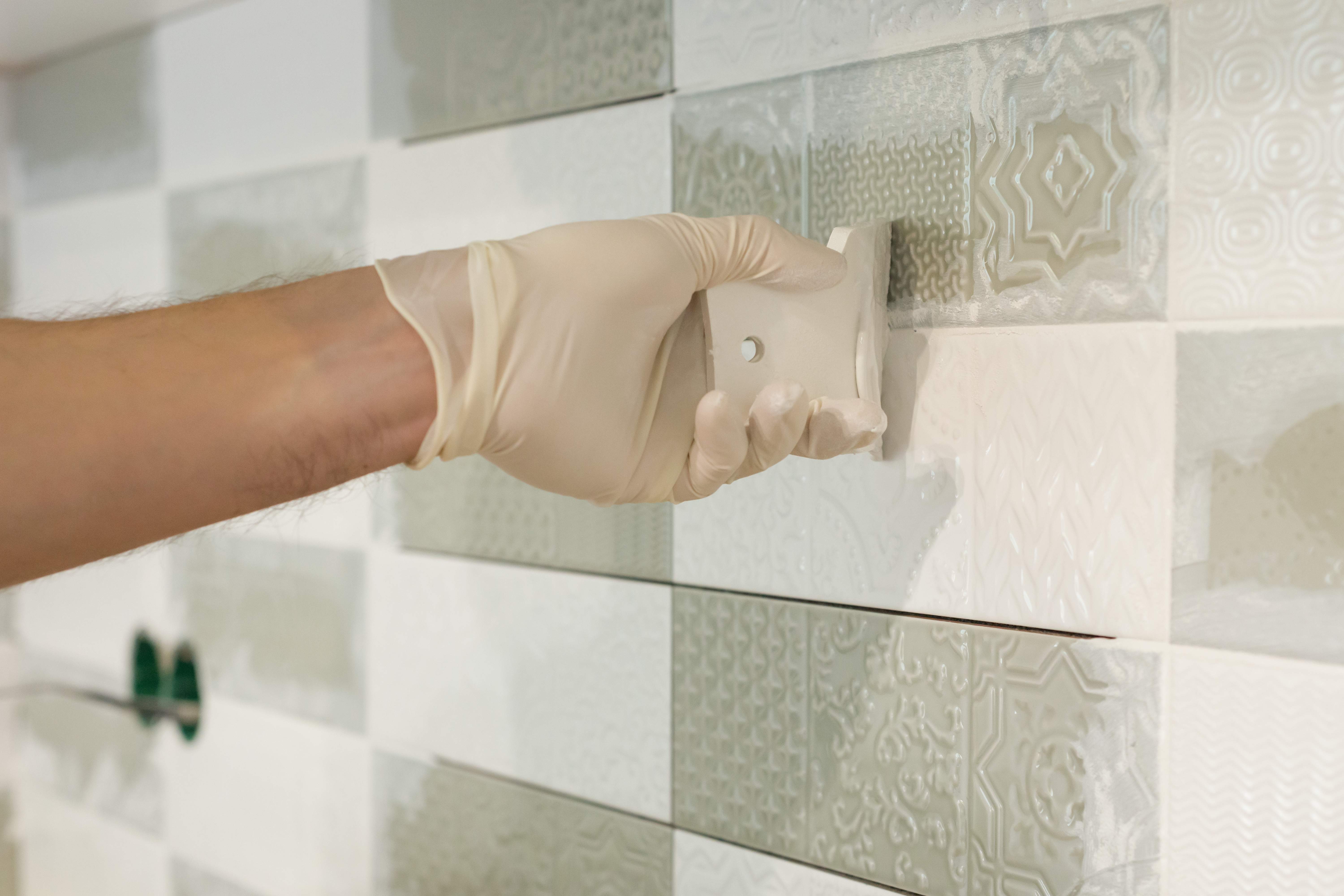Seal and Shine: Elevate Your Backsplash with the Right Grout Sealer
Posted by Mike Belk on Dec 04, 2023

The Importance of Grout Sealer
To elevate the look and longevity of your backsplash, it's essential to understand the significance of grout sealer. Grout plays a critical role in backsplashes as it fills the gaps between tiles, providing structural support and preventing moisture and debris from seeping through. However, without proper protection, grout can become susceptible to staining, discoloration, and deterioration over time. This is where a grout sealer becomes indispensable.
Understanding the Role of Grout in Backsplashes
Grout serves as the adhesive that holds tiles together and creates a cohesive and visually pleasing backsplash. It not only enhances the aesthetic appeal of the installation but also reinforces the integrity of the tiles, preventing them from shifting or becoming loose. Additionally, grout helps to seal the gaps between tiles, acting as a barrier against water, stains, and dirt.
Without grout, the tiles in your backsplash would be more prone to damage and may not achieve the desired finished look. The grout color also plays a significant role in the overall appearance of the backsplash, allowing you to create contrasts or achieve a seamless blend with the tiles.
Why Use a Grout Sealer for Backsplashes
Applying a grout sealer is crucial for protecting and prolonging the life of your backsplash. A grout sealer acts as a barrier, preventing liquids, oils, and other substances from penetrating the grout and causing stains or discoloration. It also helps to repel water and moisture, reducing the risk of mold or mildew growth.
By using a grout sealer, you can maintain the original color of the grout and prevent it from fading or yellowing over time. Sealing the grout also makes it easier to clean and maintain, as spills and stains are less likely to adhere to the surface.
Regularly inspecting the sealed grout and reapplying the sealer as needed will help ensure the long-term durability and beauty of your backsplash. For more information on how to choose the right grout sealer for your backsplash, check out our article on how to choose grout for backsplash.
Understanding the role of grout and the importance of using a grout sealer will help you make informed decisions when it comes to protecting your backsplash investment. With the right grout sealer, you can enjoy a beautiful and functional backsplash that withstands the test of time.
Types of Grout Sealers
When it comes to protecting your backsplash, choosing the right grout sealer is essential. Grout sealers are designed to provide a protective barrier that prevents stains, dirt, and moisture from penetrating the grout lines. There are different types of grout sealers available, each with its own characteristics and benefits. Let's explore three common types: penetrating sealers, topical sealers, and natural look vs. enhanced look sealers.

Penetrating Sealers
Penetrating sealers, also known as impregnating sealers, are designed to penetrate the porous surface of the grout. These sealers create a barrier by bonding with the grout molecules, making them resistant to stains and water penetration. Penetrating sealers do not alter the appearance of the grout significantly, making them ideal for those who prefer a natural look.
One of the advantages of penetrating sealers is their durability. They can last for several years before requiring reapplication. Additionally, these sealers do not leave behind a surface film, allowing the grout to breathe and retain its natural texture. It's important to note that penetrating sealers may not be suitable for all types of backsplash materials. Ensure compatibility by referring to the manufacturer's recommendations or consulting a professional. For more information on grout for backsplash, check out our article on grout for backsplash.
Topical Sealers
Topical sealers, as the name suggests, form a protective layer on the surface of the grout. These sealers create a physical barrier that shields the grout from stains, moisture, and dirt. Topical sealers are available in various finishes, including matte, satin, and high gloss, allowing you to enhance the appearance of your grout.
One of the key advantages of topical sealers is their ease of use. They are typically applied directly to the surface of the grout using a brush or roller. Topical sealers provide immediate protection and can enhance the color and sheen of the grout. However, it's important to note that topical sealers may require more frequent reapplication compared to penetrating sealers.
Natural Look vs. Enhanced Look Sealers
Grout sealers are available in both natural look and enhanced look options. Natural look sealers are designed to maintain the original appearance of the grout, providing protection without altering the color or texture significantly. These sealers are ideal for those who prefer a subtle and understated look.
On the other hand, enhanced look sealers are formulated to deepen the color and enhance the natural beauty of the grout. These sealers can give the grout a wet or glossy appearance, making it stand out and adding depth to the overall aesthetic of your backsplash.
The choice between natural look and enhanced look sealers depends on personal preference and the desired outcome for your backsplash. Consider the style of your kitchen or bathroom and the overall design scheme when selecting the appropriate sealer.
Choosing the right grout sealer for your backsplash is crucial in maintaining its longevity and appearance. Whether you opt for a penetrating sealer, topical sealer, natural look, or enhanced look sealer, ensure that it is compatible with your backsplash material. Regular inspection and reapplication of the sealer, as well as proper cleaning and maintenance, will help keep your backsplash looking beautiful for years to come.
Factors to Consider
When selecting a grout sealer for your backsplash, there are several factors to take into consideration. These factors can help ensure that you choose the right sealer for your specific needs. Consider the following:
Backsplash Material Compatibility
The first factor to consider is the compatibility of the grout sealer with the material of your backsplash. Different types of backsplash materials, such as ceramic, glass, or natural stone, may require different types of grout sealers. It's important to choose a sealer that is specifically formulated for the material of your backsplash to ensure proper adhesion and protection.
To determine the compatibility, refer to the manufacturer's recommendations or consult with a professional. Additionally, you can visit our article on grout for backsplash for more information on choosing the right grout for your backsplash.
Durability and Longevity
Another important factor to consider is the durability and longevity of the grout sealer. The sealer should provide long-lasting protection against stains, moisture, and dirt. Look for a sealer that is known for its durability and ability to withstand the conditions of a kitchen or bathroom environment.
To assess the durability of a grout sealer, check for its resistance to chemicals, water, and UV rays. Additionally, consider the expected lifespan of the sealer and whether it requires regular reapplication. Some sealers may last for several years, while others may need to be reapplied more frequently.
Application Method and Ease of Use
The application method and ease of use are factors that can greatly impact your experience with the grout sealer. Some sealers come in a spray-on form, while others are applied with a brush or roller. Consider the application method that you are most comfortable with and ensure that the sealer you choose aligns with your preferences.
Additionally, the ease of use of the grout sealer is important. Look for a sealer that is easy to apply and does not require extensive preparation or complicated instructions. This will make the sealing process more efficient and hassle-free.
By considering these factors, you can confidently choose a grout sealer that is compatible with your backsplash material, provides long-lasting protection, and is easy to apply. Remember to always follow the manufacturer's instructions for application and maintenance to ensure the best results. For more information on choosing the right grout for your backsplash, check out our article on how to choose grout for backsplash.
Applying Grout Sealer
To ensure the longevity and beauty of your backsplash, it's crucial to properly apply grout sealer. This protective layer helps prevent stains, water damage, and discoloration, keeping your backsplash looking pristine. The process of applying grout sealer involves preparing the backsplash, applying the sealer, and allowing for curing and drying time.
Preparing the Backsplash
Before applying grout sealer, it's important to prepare the backsplash for the application. Follow these steps to ensure a clean and smooth surface:
- Clean the grout lines: Use a grout cleaner and a stiff brush to remove any dirt, debris, or stains from the grout lines. Ensure that the grout lines are completely clean and dry before proceeding.
- Protect surrounding surfaces: Cover any adjacent surfaces, such as countertops or cabinets, with plastic or drop cloths to prevent accidental sealer stains.
- Test the sealer: Prior to applying the sealer to the entire backsplash, perform a small test in an inconspicuous area to ensure compatibility and desired results.
Applying the Sealer
Once the backsplash is prepared, you can proceed with applying the grout sealer. Follow these steps for a successful application:
- Choose the appropriate sealer: Select a grout sealer that is suitable for your backsplash material and grout type. Refer to our article on grout for backsplash for more information on selecting the right grout for your backsplash.
- Read the manufacturer's instructions: Carefully read and follow the instructions provided by the sealer manufacturer. Different sealers may have specific application techniques and drying times.
- Apply the sealer to the grout lines: Using a small brush or applicator, apply the sealer directly onto the grout lines. Ensure that the sealer fully saturates the grout, but avoid getting sealer on the tile surface.
- Wipe off excess sealer: After applying the sealer, use a clean cloth or sponge to wipe off any excess sealer from the tile surface. This helps prevent a hazy or sticky residue from forming.
Curing and Drying Time
After applying the grout sealer, it's important to allow sufficient time for curing and drying. This ensures that the sealer properly bonds with the grout and provides optimal protection. The curing and drying time can vary depending on the specific sealer used, so refer to the manufacturer's instructions for accurate information.
During the curing and drying period, it's essential to avoid any contact with water or moisture. This can compromise the effectiveness of the sealer and lead to potential damage. It's recommended to wait at least 24 hours before exposing the backsplash to water or cleaning products.
By following these steps for applying grout sealer, you can enhance the longevity and appearance of your backsplash. Remember to regularly inspect the sealed grout and reapply the sealer as necessary to maintain its protective properties. For more tips on grouting and backsplash maintenance, check out our article on how to choose grout for backsplash.
Maintaining Sealed Grout
Once you have applied a grout sealer to your backsplash, it's important to maintain it properly to ensure its longevity and effectiveness. Regular cleaning and inspection are key to preserving the sealed grout. Here are some cleaning and maintenance tips to help you keep your backsplash looking fresh and protected:
Cleaning and Maintenance Tips
- Regular Cleaning: Clean your backsplash regularly to prevent dirt, grime, and stains from building up on the sealed grout. Use a mild, non-abrasive cleaner and a soft brush or sponge to gently scrub the grout lines. Avoid using harsh chemicals or abrasive tools that can damage the sealer.
- Avoid Harsh Chemicals: When cleaning the backsplash, steer clear of strong chemicals, bleach, or acidic cleaners. These can degrade the grout sealer and cause discoloration or damage to the grout. Opt for pH-neutral cleaners specifically formulated for use on sealed grout.
- Wipe Spills Promptly: Accidental spills can happen in the kitchen or bathroom, so it's important to wipe them up promptly. Liquid can seep into unsealed or damaged grout, causing staining or weakening the sealer. Use a clean cloth or paper towel to blot up spills as soon as they occur.
- Avoid Scrubbing Too Hard: While it's important to keep the grout clean, avoid scrubbing too vigorously, especially on delicate or porous grout. Scrubbing too hard can wear down the sealer and damage the grout itself. Instead, use gentle pressure and a soft brush or sponge to clean the grout lines.
- Reapply Sealer if Necessary: Over time, the grout sealer may wear off, especially in high-traffic areas or areas exposed to moisture. Regularly inspect the condition of the sealed grout and look for signs of wear or deterioration. If the sealer appears faded or water no longer beads up on the surface, it may be time to reapply the grout sealer.
Regular Inspection and Reapplication
- Inspect Sealed Grout: Conduct regular inspections of the sealed grout to check for any signs of wear or damage. Look for areas where the sealer may have worn off, become discolored, or where the grout may have cracked or deteriorated. Address any issues promptly to prevent further damage.
- Reapply Grout Sealer: If you notice that the grout sealer is no longer providing the desired level of protection, it may be necessary to reapply the sealer. Follow the manufacturer's instructions for proper application and ensure that the surface is thoroughly cleaned and dried before applying the new sealer.
By following these cleaning and maintenance tips and regularly inspecting the condition of the sealed grout, you can prolong the life of your grout sealer and keep your backsplash looking its best. For more information on choosing the right grout for your backsplash, check out our article on how to choose grout for backsplash.



